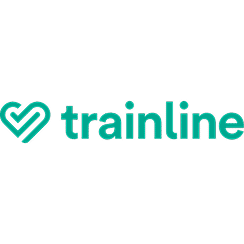Posted on: 13.08.2019
Digital transformation is changing the game, are you set up to win?
Digital has transformed how we shop, listen to music, stay physically and mentally healthy and so much more. By putting the customer first, it has completely changed people’s expectation and what they are willing to consume. To keep up with those expectations, businesses must evolve too. Yet according to tech media company IDG, while 89% of companies plan to adopt a digital-first strategy, only 44% of them have gone and done it.
There’s no denying that digital transformation is a complex, multifaceted process that represents a cultural shift in the workplace and changes that ultimately affect every part of an organisation. The challenge for many is what “digital transformation” means for your business. How do you take that huge concept and turn it into actions and strategies that will benefit your customers and stakeholders?
On Tuesday 17 September 2019, we hosted a panel discussion and audience Q&A at the Ivy Club in London to explore some of the big ideas around digital transformation:
- Taking concept to delivery
- Putting the customer first
- Driving and adopting integration
- Working with shoestring budgets
- Persuading the board/middle management
- Digital vs IT
- Leading the digital innovation conversation
Featuring our expert panel:
- Mark Burrett, Associate Director, Hanson Search (Moderator)
- Subhash Mishra, Director of Digital Strategy, FirstGroup Plc
- Gregor Young, Head of Digital Brand, BT Group
- Alex Horstmann, Director of Product Design, Spotahome
- Natalia Kotova, Director of Digital Transformation, Thomson Reuters
Did you miss it or just want a recap? Read on for all the insights and actionable tips…
Big picture: what is digital transformation?
Digital transformation is more than a new website or digital marketing strategy, effectively it’s the transformation of a whole business. As customer expectations increase and competitive action becomes swifter, this process helps organisations to become more agile and customer-centric. It changes how a company markets itself and its products, how it prices product, and it changes how it deals with the backend – processing orders and customer support, for example.
Ultimately, digital transformation enables organisations to provide a better digital experience and enables and empowers people throughout the business to use different ways and tools to serve the customer better – and enables the customer to do the same themselves.
Soundbite from the panel
Gregor Young: “Nowadays digital transformation is more about a mindset of changing everything to serve the customer as best as you possibly can and that goes well beyond digital things: it goes into business models, product propositions, pricing strategy – absolutely everything.”
Subhash Mishra: “Ultimately, it’s about understanding your USPs and innate strengths and differential – what can make you more agile and more customer-centric.”
Where do you start with a digital-first approach?
Deep customer insight is hugely important when adopting a digital-first approach. The rate of change in consumer behaviour is incredibly rapid these days, so constantly keeping the customer at the forefront of minds is paramount.
Looking at the customer journey and life cycle is one of the more holistic ways of addressing the whole breadth of the challenge, and it enables businesses to pick out the things that will really improve the customer experience. Prioritising and having a mindset of continuous optimisation is imperative in digital transformation, and processes like service and product mapping can help businesses to understand how they can better serve customer needs with products and services going forward.
Additionally, understanding a company’s USPs compared to those of a competitor can help to focus prioritisation and lead to the adaptation of product roadmaps, ultimately delivering a better ROI on time.
Soundbite from the panel
Alex Hortsmann: “Start by fully understanding the drivers of customer behaviour – how they behave is very much driven by what their needs are and it’s important to ask what goals they’re trying to achieve. Looking across the entire customer journey – starting at the acquisition period and looking all the way to the end is very important, as is asking how you keep that customer loyalty in the cycle.”
We hear a lot about the customer experience and its importance in digital transformation. In order to achieve that experience it’s not just about the technology at the front that the customer interacts with, but the mindset of the organisation and the workplace culturally around that.
Incentives tend to drive behaviour, and in large corporations there can be a risk of a silo mentality. A successful digital business requires multiple teams to pull together, and cross-functional KPIs can offer both accountability and help individual departments to understand their role in driving that success
Businesses often underestimate the need for a vision that comes from the top, whereby everyone in the organisation is made to feel that the work they’re doing is helping to achieve that vision and feel part of it. The outlining of a common vision and objectives by business leaders in the form of regular workshops, prioritisation sessions and cross-divisional workshops can help to better establish what success looks like, how it’s measured, and the divisional commitments which are involved in that.
Soundbite from the panel
Alex Hortsmann: “We can talk about incentives and objectives and KPIs, but people want to feel that they’re part of making something better – and that has to start with the leader of the organisation and it has to filter all the way down.”
Natalia Kotova: “When you’re dealing with significant change it’s all about changing the mindset. The journey is ongoing; how do we organise ourselves and put the customer first? How do we allow technology to enable us to know our customer better? It’s important to invite people with you on that journey: start small and then you can demonstrate your practical results and outcomes – then more people want to join. Digital transformation touches every single business unit.”
How can digital and IT teams work together effectively? There’s a need to move fast at the front end, but there’s also the security and stability needed at the backend.
When we refer to ‘IT teams’ we generally mean the robust and secure backend technology which business infrastructure relies upon to efficiently function. The term ‘digital team’ tends to refer the people at the front-end who are creating experiences, and it is useful to understand these teams separately.
IT teams value and operate at a slow pace of change with integrity. On the digital side, we’re aware that customer expectations change day by day, so it’s at the opposite end of the spectrum in terms of pace and agility with a different attitude to risk and test and failing.
Innovation is becoming increasingly subjective in organisations – how do you drive the conversation?
Innovation is all about looking at how we can do things better or differently. If organisations can remove the fear of failure when teams are testing and experimenting, the failure becomes part of the learning, and small levels of innovation can cultivate that culture of risk-taking. Driving a culture of continuous optimisation also helps in building the conversation and should be fundamental to digital transformation – in this way businesses and teams learn fast and in a collective way.
Soundbite from the panel
Alex Hortsmann: “Innovation doesn’t have to be big, it can be small and incremental. As long as the customer feels that something is different then that’s a measure of success of innovation.”
What are the personality traits you look for in people when building a successful digital team?
Curiosity and a desire to learn and understand is fundamental in digital innovation, as is bravery and a willingness to take risks and fail, driven by a hunger for change. It’s not necessarily about being a technology person, it’s more about having the ability to work cross-functionally and influence people across multiple business units.
Having patience and understanding that it’s a journey during which change will take time also helps.
Soundbite from the panel
Gregor Young: “Always look for a growth mindset. Digital transformation can be so broad and it’s important to look for people that want to expand their horizons and improve themselves and take on new things – from there they’ll just grow and grow.”
Where do you find the energy to implement change?
Ultimately, it’s all about people. Tenacity, perseverance, consistency and clarity of vision is important when leading a business in the course of digital transformation. It’s not a big bang, it’s change agents driving things through influence and relationships.
When do you think digital transformation will be demystified?
It’s often still the case that key decision-makers aren’t digital natives and this can go hand in hand with a fear of adopting a digital transformation strategy. That demographic situation will, of course, change in time but in the meantime it’s about education and introducing incremental changes over time.
How do you find a lexicon that resonates across an entire business and results in buy-in from the wider employee network?
Clear vision and a strong sense of direction from a leader is fundamental in earning buy-in from the wider employee network, as is that person’s ability to engage emotionally and understand what’s in it for employees and customers. Digital is not on top of the day job, it is the day job, and it can be useful to demonstrate to people that they do know a lot of things already.
Soundbite from the panel
Subhash Mishra: “It’s about being able to build a clear vision and a strong sense of direction; a lot of people are looking for a leader to set that for them. You also need a clear rationale as to why this vision and what’s in it for everyone.”
What does digital transformation mean for non-direct-to-customers businesses?
Regardless of whether a business is B2B or B2C, understanding that digital transformation can reduce costs, simplify processes, and remove customer frustrations is a truth which every organisation should accept.
Soundbite from the panel
Natalia Kotova: “Even in a B2B scenario we still need to be obsessed by the customer and customer satisfaction and experience.”
How can microbusinesses undertake digital transformation?
Microbusinesses are often more likely to be risk-averse and siloed than larger organisations, however, a lot of the principles of digital transformation are scalable. Customer focus and the need for businesses to put themselves in the customer’s shoes is relevant to every organisation, regardless of size, as is an openness to a growth mindset. A willingness to adopt new things, be brave, and try and test should be a priority for businesses of every size, regardless of resource or budget.
How can you grow budgets and convince stakeholders to increase investment?
Having a robust financial model and business case which tells a really good story and articulates a vision well is key when seeking investment and buy-in from stakeholders. Moving a budget from being an absolute figure to a percentage of channel revenue can be a useful way to promote the understanding that growth comes at a cost. Repositioning digital as a business function (and not as a technical cost-centre) can also drive a better understanding of its role within an organisation.
Soundbite from the panel
Natalia Kotova: “Start small and then play back the results – appetite grows as change becomes apparent and results are evident.”
How do you switch from an efficiency model to a growth mindset?
A focus on loyalty and retention is paramount, and Net Promoter Scores (NPS) can help to inform customer-experience-related KPIs across a business. Data is a powerful enabler for managing the customer life cycle and working to shift an NPS can sometimes be a KPI itself. However, it’s undeniable that more traditional KPIs – profit, EBITDA, revenue, growth – are often taken more seriously than NPS and their ability to drive revenues.
Who owns and drives digital transformation?
Soundbite from the panel
Gregor Young: “It depends where you are in the maturity of your digital transformation. There are often a small number of agitators pushing for change and then there’s a tipping point where the business embraces it and it belongs to everybody.”


























 Career Enquiry
Career Enquiry
